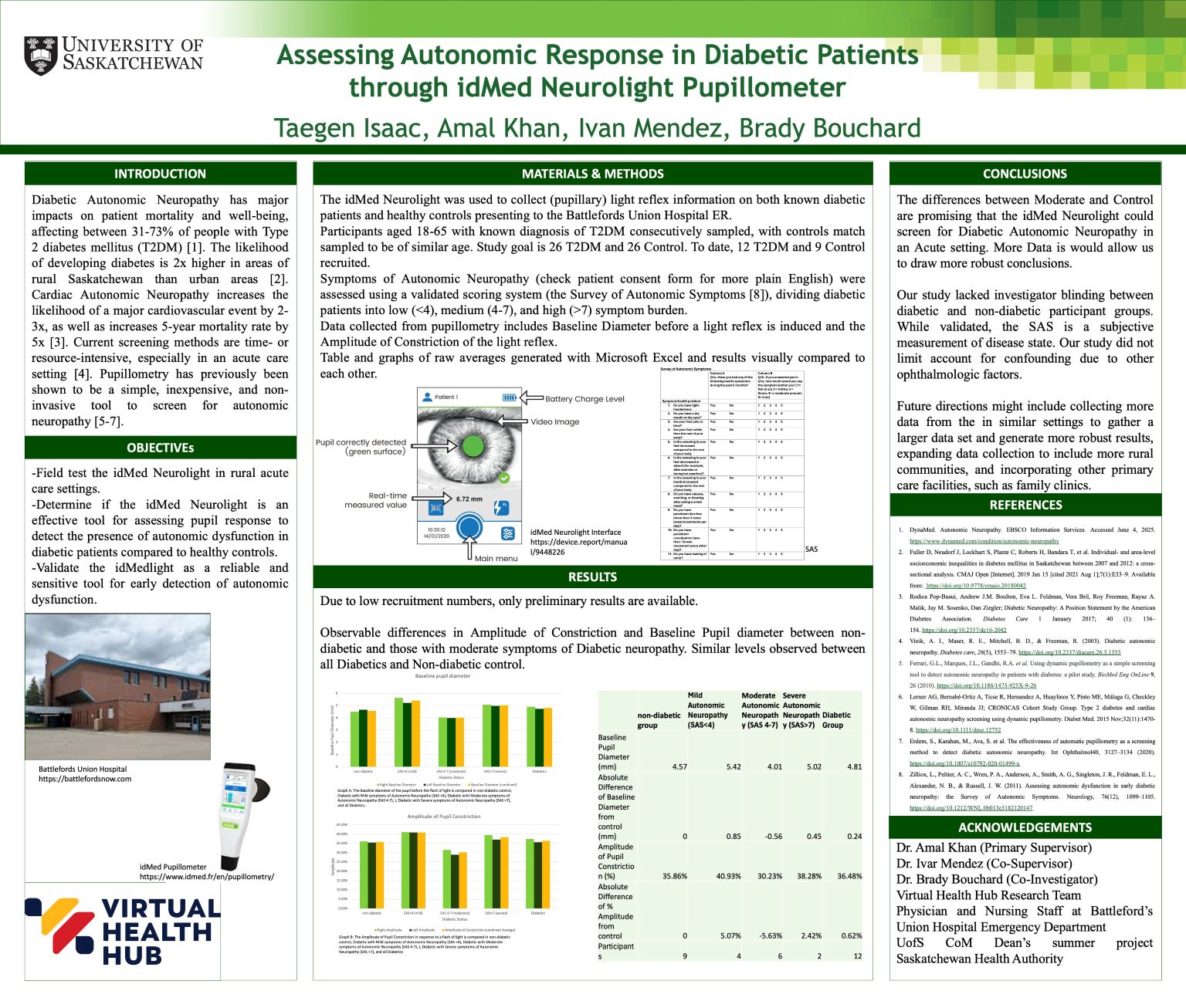
Assessing Autonomic Response in Diabetic Patients through idMed Neurolight Pupillometer
Taegan Isaac
Introduction: Diabetic Autonomic Neuropathy affects between 31-73% of people with T2DM. Cardiac Autonomic Neuropathy increases the likelihood of a major cardiovascular event by 2-3x and 5-year mortality rate by 5x. Current screening methods are time or resource intensive, especially in an acute care setting. Pupillometry has previously been shown to be a simple, inexpensive, and non-invasive tool to screen for autonomic neuropathy.
Objectives: Validate the idMed Neurolight as a reliable and sensitive tool for early detection of autonomic dysfunction through assessment of pupil light response.
Methods: The idMed Neurolight was used to collect light reflex information on both known diabetic patients and healthy controls presenting to the Battlefords Union Hospital ER. Symptoms of Autonomic Neuropathy were assessed using the Survey of Autonomic Symptoms, dividing diabetic patients into low, medium, and high symptom burden. Baseline Pupil
Diameter and Amplitude of Pupillary Contraction were compared to SAS score, and assess visually using graphs.
Results: There were observable differences in Amplitude of Constriction and Baseline Pupil diameter between Control and Moderate symptom groups. Similar levels were observed
between all Diabetics and Control.
Conclusion: The differences between Moderate and Control groups are promising for Neurolight’s role as a screening tool for Diabetic Autonomic Neuropathy.
